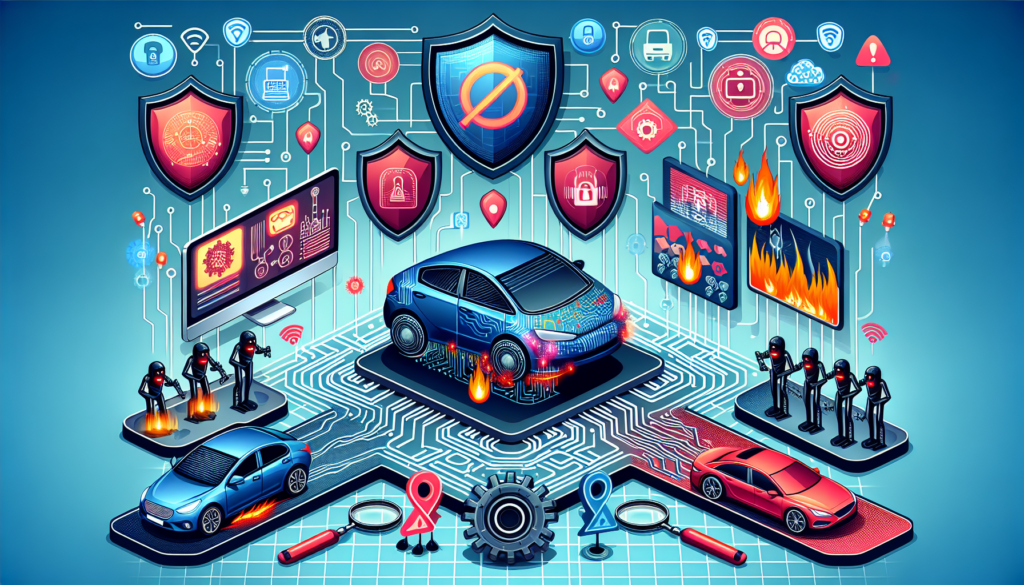Autonomous vehicles, bearers of disruptive technology that promises to revolutionize global mobility, rely on sophisticated hardware and software systems to operate independently in a complex and dynamic road environment. The safety of these systems is critical not only for the effective functioning of the vehicle, but for the safety of passengers, pedestrians, and other road users. However, this same complexity and the integration of wireless connectivity have introduced a new set of vulnerabilities and challenges in cybersecurity, making the adoption of robust and multifaceted solutions essential.
Emerging Cyber Threats in Autonomous Vehicles
The architecture of an autonomous vehicle encompasses a plethora of sensors, control systems, and data processing algorithms that are susceptible to cyberattacks. Among the critical components that can be compromised are the following:
- Vehicle Communication Systems: Using V2X (vehicle-to-everything), autonomous vehicles communicate with other vehicles, infrastructure, and devices. The interception or malicious alteration of these data can lead to misinformation to the vehicle or, worse, grant control to an unauthorized actor.
- Software and Firmware: The presence of software defects, whether inherent or induced by malicious updates, can result in unpredictable vehicle behavior.
- Sensors and Cameras: Attackers could manipulate sensors or inject false data, resulting in inadequate navigation or obstacle detection decisions.
- Propulsion and Control Systems: Compromising these systems allows for interference with critical vehicle operations such as steering, braking, and acceleration.
Analysis of Specific Vulnerabilities
The methods of attack used against autonomous vehicles are sophisticated and often require an advanced understanding of integrated systems and networks. These include:
- GPS Spoofing: Where false signals are transmitted to disorient the vehicle’s navigation system.
- Sybil Attacks: Attacks that create a network of false identities in a network, potentially overwhelming the systems with erroneous information.
- Denial of Service (DoS) and Distributed Denial of Service (DDoS) Attacks: Attacks that overload the vehicle’s communication network, preventing normal operation.
- Man-in-the-Middle (MitM) Attacks: Where an attacker intercepts and possibly alters the communication between two parties without their knowledge.
Mitigation Strategies and Cybersecurity Technologies
To counter these threats, the implementation of a comprehensive cybersecurity strategy is imperative. This involves:
- Robust Cryptography: Using advanced encryption standards to protect data transfer.
- Authentication and Identity Management: Systems that ensure that only verified entities can access and operate the vehicle or its systems.
- Intrusion Detection and Incident Response: Systems that monitor network activity in real-time to detect and respond to suspicious or anomalous behavior.
- Network Segmentation and Least Privilege Principles: Limiting communication between systems and minimizing access based on the need to know and operate a particular system.
Case Study: Cybersecurity Implementation in Autonomous Vehicles
As an example, we can look at the work done by a leading automotive company, where network segmentation and constant monitoring have been combined. This approach protects against intrusion attacks by establishing virtual barriers between the vehicle’s processing and control units, while intrusion detection systems use advanced algorithms to identify traffic patterns that are anomalous.
Future Projections and Ongoing Development
Looking ahead, cybersecurity in autonomous vehicles will continue to evolve in response to emerging challenges. Artificial Intelligence and machine learning will play key roles in detecting threats in real-time and adapting to new attack vectors. Additionally, the standardization of stricter security frameworks in the automotive industry and collaboration among manufacturers, software providers, and regulators are expected to contribute significantly to risk mitigation.
In summary, the convergence of cybersecurity and autonomous vehicle technology is a rapidly advancing field that requires a balanced and multifaceted approach. Ongoing research and development efforts, coupled with a deep understanding of digital threats and the implementation of robust technical solutions, are essential to ensure a safe transition to autonomous mobility in the future.

